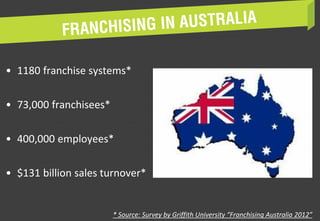This document discusses franchising as a business model. It defines franchising as a legal relationship between a franchisor and franchisee where the franchisee is granted use of the franchisor's brand and business system. It outlines the main types of franchises and discusses the key elements of an effective franchise system including the brand, operating system, support system and franchisee. The advantages for both franchisors and franchisees are provided. Steps for developing an effective franchise strategy are also summarized.






















